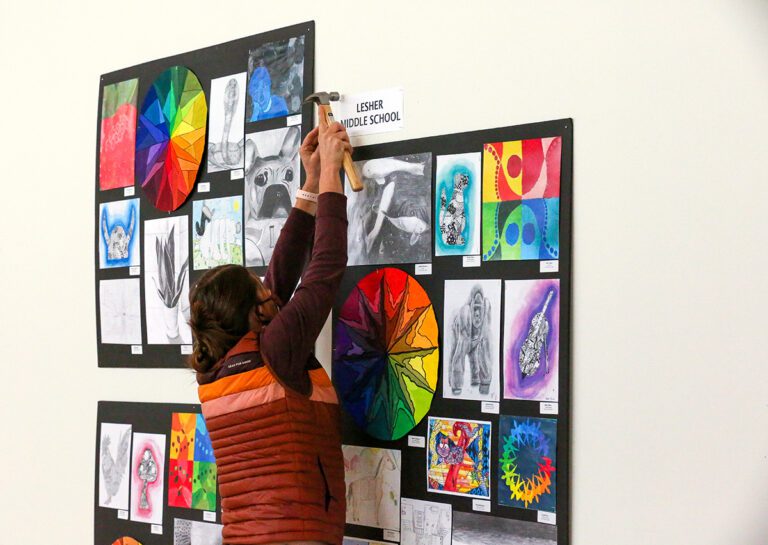If you’ve recently started a blog for your students and their families, you may be wondering how to increase readership. When I first started blogging, the only option I had was to put blurbs in our school newsletters. Although I generated some traffic this way, I constantly had students come up to me asking, “What is that website address again?” Inevitably, they’d write it on a sticky note, which would get lost by the time they got back to their classrooms. After much thought, I finally solved the problem. Here’s what I came up with.
1. Give Them Your Card
During back to school nights or student art shows, I often found myself talking up the blog as a way for families to get more involved with the arts. We would have a great conversation, but I would walk away wondering if they would really follow through and make a visit. So now at these types of events, I set out art room business cards, which outline what the blog has to offer families. It’s a great way to make a concrete connection.
2. Make Labels
What good is having a blog if your readers don’t know where to look for it? A label is a quick and easy way to make sure every one of your students has your art room blog address at their fingertips. You can purchase plain white labels at almost any office supply store. Our school had Avery labels, so that’s what I used. The process was slick, since I download a free template from the Avery website to use with Microsoft Word.
Basically, I just typed up a very simple label, which had the name and web address of my classroom blog. Classroom teachers helped each student stick a label on something that went home every night, such as an assignment notebook or take home folder. Voila! No more questions about how to get to the art room blog.

These two simple ideas are sure to increase readership and get families more involved with the arts.
Tell us, how do you communicate with families about your classroom blog, or website?
Magazine articles and podcasts are opinions of professional education contributors and do not necessarily represent the position of the Art of Education University (AOEU) or its academic offerings. Contributors use terms in the way they are most often talked about in the scope of their educational experiences.





